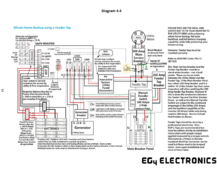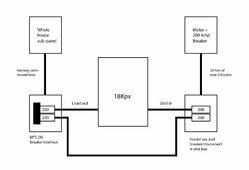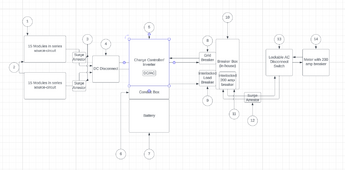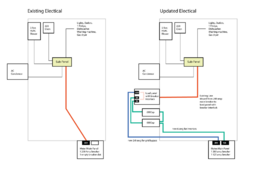Hi all,
I'm planning on installing a residential solar system on my house with the EG4 18kpv inverted and powerwall. Upon reviewing the manual, I found this diagram.

Prior to viewing this diagram, I was planning to install the system like this:

I'm trying to understand the need for the Feeder Tap and Manual Transfer Switch. Doesn't the EG4 18kpv have a built in automatic transfer switch? Can I run my main service power directly to grid inputs on the EG4 18kpv and run wire from my Load directly to my main panel?
Thanks
I'm planning on installing a residential solar system on my house with the EG4 18kpv inverted and powerwall. Upon reviewing the manual, I found this diagram.

Prior to viewing this diagram, I was planning to install the system like this:

I'm trying to understand the need for the Feeder Tap and Manual Transfer Switch. Doesn't the EG4 18kpv have a built in automatic transfer switch? Can I run my main service power directly to grid inputs on the EG4 18kpv and run wire from my Load directly to my main panel?
Thanks








